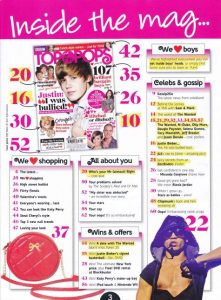In order to make the presentation of your pages aesthetically pleasing with the programme Flipsnack, you need another page.
Whilst, you won’t be assessed or moderated for this page, it will fit well with evidencing how well you understand your target audience – an advertiser will not advertise in a magazine if the target audience would not be the kind of consumers for their product.
Have a look for an appropriate advert (make sure the resolution is good so that it doesn’t come out pixelated) that might appear on your inside cover of your magazine. Look for other products, other than music related products (albums, tours, concerts etc). You can also find a music album, tour or music related advert that fits with your genre for the back page so that your Flipsnack presentation is a completely mini magazine.
Here is a slideshow with a couple of ideas but make sure you go out and find your own ideas from some online searches. Remember, it needs to be A4 and a high resolution.
You should then make sure in the post on the blog that outlines your choice of advert that ‘you appreciate this isn’t going to be marked but for the purposes of presentation, having an extra page in the magazine helped make the Flipsnack platform work better. However, it was an interesting exercise in reaffirming that you knew who exactly your target audience were i.e. young teens and you can then outline briefly their demographics and psychographics (remember yougov research) and explain why the advert would fit in your magazine.







